Related Research Articles
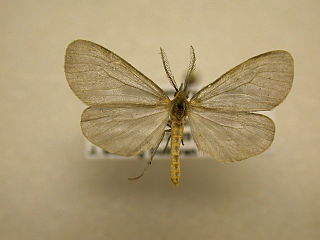
Pagara is a monotypic moth genus in the family Erebidae. Its only species, Pagara simplex, the mouse-colored lichen moth, is found in North America, where it has been recorded from Alabama, Arkansas, Florida, Georgia, Illinois, Indiana, Iowa, Kansas, Kentucky, Maryland, Mississippi, New Hampshire, North Carolina, Ohio, Oklahoma, South Carolina and Tennessee. Both the genus and species were described by Francis Walker in 1856.
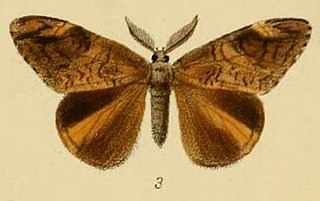
Aroa is a genus of moths in the subfamily Lymantriinae first described by Francis Walker in 1855. Species are distributed in South Africa, China, throughout India, Sri Lanka, Myanmar, and Java.

Iropoca is a monotypic moth genus in the subfamily Lymantriinae erected by Alfred Jefferis Turner in 1904. Its only species, Iropoca rotundata, the iropoca moth, was first described by Francis Walker in 1855. It is found in the Australian states of Victoria, New South Wales and Queensland.
Pantana is a genus of tussock moths in the family Erebidae. The genus was erected by Francis Walker in 1855.

Orgyia postica, the cocoa tussock moth or hevea tussock moth, is a species of moth of the subfamily Lymantriinae of family Erebidae found from the Oriental tropics of India, Sri Lanka, Myanmar, Borneo, Java, New Guinea and Taiwan. It was described by Francis Walker in 1855.

Scirpophaga incertulas, the yellow stem borer or rice yellow stem borer, is a species of moth of the family Crambidae. It was described by Francis Walker in 1863. It is found in Afghanistan, Nepal, north-eastern India, Sri Lanka, Bangladesh, Myanmar, Vietnam, Thailand, Malaysia, Singapore, Sumatra, Java, Borneo, Sumba, Sulawesi, the Philippines, Taiwan, China and Japan.

Arctornis submarginata is a species of moth of the subfamily Lymantriinae of family Erebidae. It is found in the north-eastern Himalaya and Sikkim, Sri Lanka, on Borneo and Sumatra and in northern Australia.
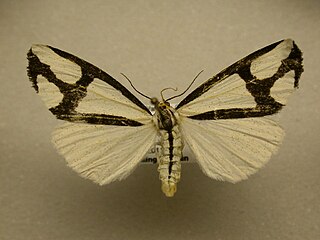
Haploa contigua, the neighbor moth, is a moth of the family Erebidae. It was described by Francis Walker in 1855. It is found in eastern North America, from Quebec to the mountains of Georgia and west to South Dakota, Arkansas and Mississippi.
Hypercompe indecisa is a moth of the family Erebidae first described by Francis Walker in 1855. It is found in Argentina and Uruguay.

Lophocampa annulosa, the Santa Ana tussock moth, is a moth of the family Erebidae. It was described by Francis Walker in 1855. It is found in southern Texas, southern Arizona, Mexico, Costa Rica, Ecuador, Venezuela, Peru, Suriname, Brazil, Argentina and Trinidad.

Pareuchaetes insulata, also known as the yellow-winged pareuchaetes, is a moth of the subfamily Arctiinae. It was described by Francis Walker in 1855. It is found on Cuba and the Antilles, as well as in the southern United States, the Dominican Republic, El Salvador, Guatemala and Nicaragua.
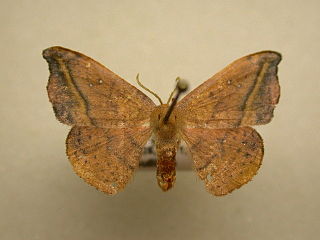
Oreta rosea, the rose hooktip moth, is a moth in the family Drepanidae. It was described by Francis Walker in 1855. It is found in North America, where it has been recorded across boreal Canada to eastern North America. In the north, the range extends to northern Alberta, northern Manitoba and Newfoundland. It is also found east of the Great Plains as far south as Florida and eastern Texas. The habitat consists of moist temperate hardwood forests.
Dreata is a monotypic moth genus in the family Eupterotidae described by Francis Walker in 1855. Its single species, Dreata hades, described by the same author in the same year, is found in Bangladesh, Myanmar and India.
Nisaga is a genus of moths in the family Eupterotidae.
Pandala is a monotypic moth genus in the family Eupterotidae described by Francis Walker in 1855. Its single species, Pandala dolosa, described by the same author in the same year, is found in Sri Lanka.
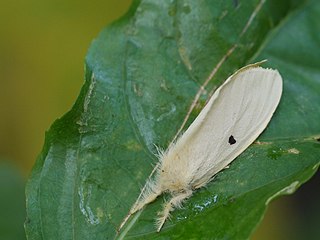
Euproctis lunata, the castor hairy caterpillar, is a moth of the family Erebidae. The species was first described by Francis Walker in 1855. It is found in India, Pakistan, Sri Lanka and Thailand.
Laelia suffusa is a moth of the family Erebidae first described by George Hampson in 1893. It is found in Bangladesh, Sri Lanka, Java, East Indies, Sundaland, the Philippines and Sulawesi.
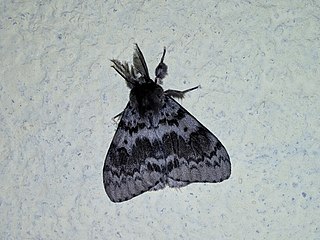
Lymantria incerta is a moth of the family Erebidae first described by Francis Walker in 1855. It is found in India and Sri Lanka.
Callopistria apicalis is a moth of the family Noctuidae first described by Francis Walker in 1855. It is found in the Indian subregion, Sri Lanka, Sundaland and the Philippines.
References
- ↑ Beccaloni, George; et al., eds. (February 2005). "Scientific name search". The Global Lepidoptera Names Index. Natural History Museum, London.
- ↑ Savela, Markku. "Nisaga simplex Walker, 1855". Lepidoptera and Some Other Life Forms. Retrieved February 7, 2018.
- ↑ Hampson, G. F. (1892). The Fauna of British India, Including Ceylon and Burma: Moths Volume I. Taylor and Francis. p. 63 – via Biodiversity Heritage Library.
- ↑ The Moths of Borneo
- ↑ Nisaga simplex caterpillar on rice in western Orissa
| This article relating to the superfamily Bombycoidea is a stub. You can help Wikipedia by expanding it. |